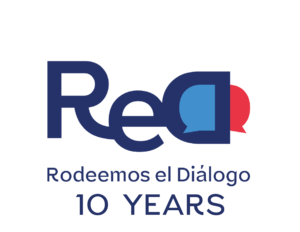Reincorporation Snapshot 11
The Current State of Reincorporation: the Inspector General’s Office Report
In early September 2020, the Inspector General’s Office presented the Colombian Congress with its second report on the implementation of the Peace Agreement. One of the report’s chapters addresses the socio-economic reincorporation of former members of the FARC-EP. This snapshot reflects on the progress and challenges of reincorporation identified by the Inspector General’s Office, as well as its recommendations.
Progress
According to the report, progress has been greatest in the implementation of ex-combatants’ socio-economic reincorporation, with significant developments during the period under analysis (March 2019 to May 2020). These include the approval and publication of Resolution 4309 in December 2019, which provides the legal framework for implementation of the reincorporation route with former members of the FARC-EP. This has also enabled the extension of ex-combatants’ monthly stipend for a further 24 months.
The report also highlights an increase in the number of individual and collective productive projects approved in the last eleven months (1,118), an increase of 601 percent over that period. It also recognises the progress made by the Office of the High Commissioner for Peace in accrediting a further 279 people as beneficiaries of reincorporation provisions.
Furthermore, of the nineteen recommendations regarding socio-economic reintegration, made by the Inspector General’s Office in its first report to national entities, fourteen have been accepted.
Challenge 1: Institutional Coordination
The report highlights the need for greater coordination between national and local authorities in the implementation of measures for crime-prevention, protection and security for vulnerable communities and their territories. Yet the physical security of those in the reincorporation process remains the most important challenge. Albeiro Suárez is the 234th ex-combatant to have been assassinated since the signing of the Agreement.
Insufficient inter-institutional coordination is evident not only with respect to security, but also in terms of socio-economic reincorporation itself. This is partly due to the delays in creating the National Reincorporation System. The absence of a binding regulatory framework means institutional commitment is discretionary and relevant governmental bodies are unable to develop plans and allocate resources for reincorporation.
Moreover, the multidimensional nature of reincorporation is undermined by the lack of an overarching reincorporation system and the overreliance on the work of two institutions: the National Council for Reincorporation (CNR) and the Agency for Reincorporation and Normalisation (ARN). A high percentage of reincorporation interventions such as the provision of health, education, housing and income-generating activities are not solely the responsibility of these two entities, but involve other governmental bodies and branches.
Challenge 2: Local-level Coordination
The Councils for Territory-focused Reincorporation (CTRs) are another concern raised in the report. The CTRs have geographical limitations, only existing in the regions where Territorial Spaces for Training and Reincorporation (ETCRs) were first established. However, according to figures from the ARN, approximately 2,600 people – only 20 percent of the accredited ex-combatants – still remain in the ETCRs. In addition, poor inter-institutional communication results in a weak positioning of local authorities and hinders efforts to promote a territory-focused reincorporation.
Recommendations in this area, made by the Inspector General’s Office, are a geographic review of the CTRs and the creation of participatory spaces in order to grant legal recognition to the New Areas of Reincorporation (NARs) – where most of the ex-combatants are currently living. A review has not been completed and legal status for NARs has not been considered in the ETCRs Consolidation Strategy.
Through the “Peace with Legality” plan, the current administration has limited implementation of its access-to-land policy to ETCRs. This creates uncertainty and concern, since land is one of the main bottlenecks for productive and housing projects for the ex-combatant population, especially for those living outside the ETCRs.
Challenge 3: Process Evaluation
Insufficient information about ex-combatants’ current situation has prevented a more accurate assessment of the impact of the reincorporation route. Of particular concern is the differing levels of progress of each of the route’s components and the disproportionate emphasis placed on economic benefits over other social reincorporation indicators. In addition, the Inspector General’s Office expressed its concern about the approval of the reincorporation route through a resolution. This puts the sustainability of the reincorporation process at risk because the scope and timescale of the route extend beyond that of the current administration.
The criteria used to determine that 50% of the reincorporation route consists of allocating funds for productive projects are unclear to the Inspector General’s Office. In particular, the reincorporation paths have not been defined in a participatory manner and would also include the other six components of the route – housing, health, education, community, family and psychosocial well-being.
The report also warns that the COVID-19 pandemic has posed even greater challenges to the socio-economic reincorporation process. The health and economic crisis has caused significant delays in plans, programmes and projects envisaged within the National Reincorporation Policy, as well as the implementation of the reincorporation route.
Embrace Dialogue urges the government to observe the Inspector General’s Office’s recommendations. We echo its call to become “a society that assumes the fulfilment of the peace agreement as a commitment that requires the joint effort of all its stakeholders.”


